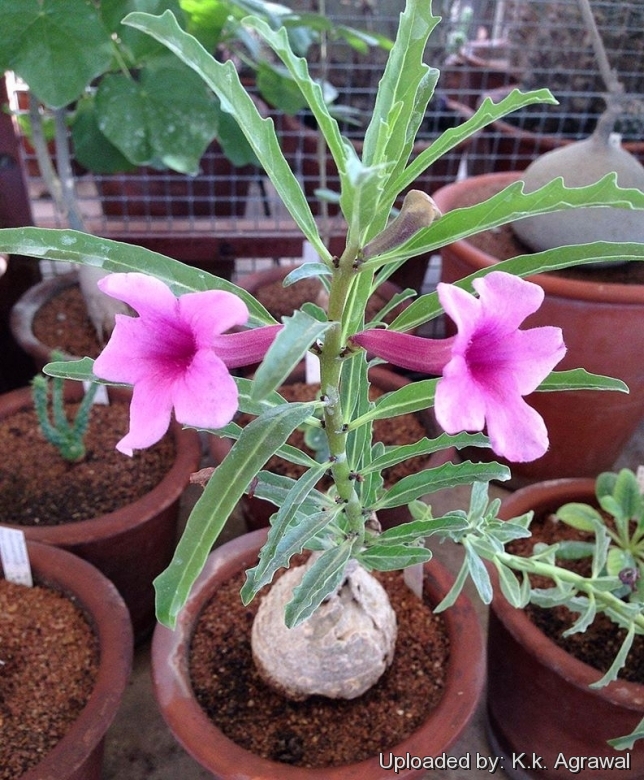
Pterodiscus speciosus Photo by: K.k. Agrawal
Origin and Habitat: South Africa (Mpumalanga), Botswana, Lesotho and Zimbabwe
Altitude: 850-1450 m
Habitat: Bare, alluvial soil in grassland.
Notes: Most of the plant from South-east Botswana are transitional forms between P. speciosus and Pterodiscus ngamicusSN|32408]]SN|32408]].
Synonyms:
Description: Pterodiscus speciosusSN|22819]]SN|22819]] is a perennial-suffrutex with an underground tuberous caudex rather than a swollen above-ground stem with annual herbaceous stems raying out every which way from the hard, conical caudex. The flowers are a bright purplish pink.
Tuber (Caudex): Carrot shaped or pyriform (conical), fleshy, often bright yellow, up to 6 cm in diameter and 50 cm tall, underground in the wild, often raised in cultivation. It is a summer growing and summer flowering plant.
Annual stems: Short, slender, erect, basal parts more or less woody, arising from the tuber15-25 cm tall. The stems are deciduous, and generally die in winter when the plant is dormant.
Leaves: In the upper part of the stems, dull green, simple, linear-oblong, usually pinnatilobed and with 5 pairs of lateral veins up to 6 cm. long and 1,5 cm. broad, lobes with darker stripes leading to the dark red throat; anterior lobe enlarged.
Flowers: Pretty and developed in the leaf axils. Tubular, funnelform bright red-purple, purplish-pink to yellowish pink and shaped something like a Streptocarpus or an Adenium bloom. 25-50 mm long, limb 30–45 mm in diameter.
Blooming season: The plant starts blooming while quite small.
Fruit: Ovate to rotund in lateral view, normally 18-22 mm long and about 16 mm broad. The fruits have 4 wings about 3 mm broad and mature in spring. Seeds one in each loculus.
Bibliography: Major references and further lectures
1) Werner Rauh “The Wonderful World of Succulents: Cultivation and Description of Selected Succulent Plants Other Than Cacti” Smithsonian Institution Press, 1984
2) Gordon Rowley “Caudiciform and Pachycaul Succulents: Pachycauls, Bottle-,Barrel-And Elephant-Trees and Their Kin a Collector's Miscellany” Strawberry Press. June 1st 1987
3) Clive Innes “Complete Handbook of Cacti and Succulents” Van Nostrand Reinhold Company, 01/Dec/1981
4) Urs Eggli “Illustrated Handbook of Succulent Plants: Dicotyledons” Springer Science & Business Media, 2002
5) Umberto Quattrocchi “CRC World Dictionary of Medicinal and Poisonous Plants: Common Names, Scientific Names, Eponyms, Synonyms, and Etymology” (5 Volume Set) CRC Press, 03/May/2012
6) Botswana Society “Botswana Notes and Records” Volumes 25-26 Botswana Society, 1993
7) Gerrit Germishuizen "Transvaal Wild Flowers" Macmillan South Africa (Publishers), 1982
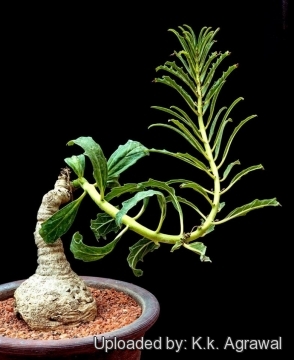 Pterodiscus speciosus Photo by: K.k. Agrawal
Pterodiscus speciosus Photo by: K.k. Agrawal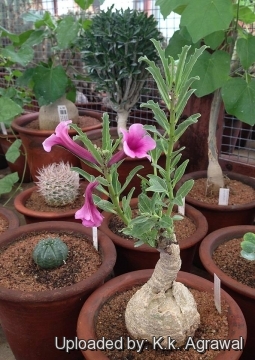 Pterodiscus speciosus Photo by: K.k. Agrawal
Pterodiscus speciosus Photo by: K.k. Agrawal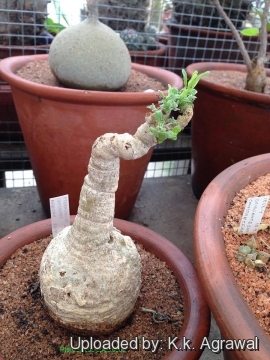 Pterodiscus speciosus Photo by: K.k. Agrawal
Pterodiscus speciosus Photo by: K.k. Agrawal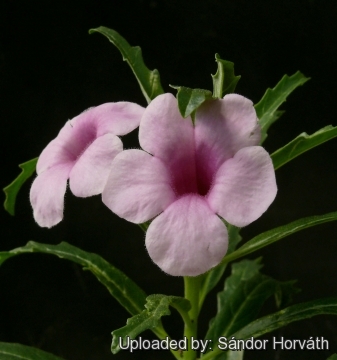 Pterodiscus speciosus Photo by: Sándor Horváth
Pterodiscus speciosus Photo by: Sándor HorváthCultivation and Propagation: They are easy to grow heat resistant plant, which grow better than the average. They do best when grown in part shade to full sun. Their attractiveness is further enhanced because they will flourish very easily in any pseudo-tropical environment. Growing in well-drained soil with lots of water, when in growth and keep dry when dormant. It can tolerate neglect, and as soon as you pay it a little attention (like repotting or fertilizing) it recovers and puts out plentiful new growth. Use diluted fertilizer on young plants to speed up growth.
They are tender, cannot endure temperatures below 2° C, if grown outdoors they will probably grow back from roots, if frozen. They are quite heat tolerant.
Reproduction: Seeds, and it can be reproduced by cuttings as well.














